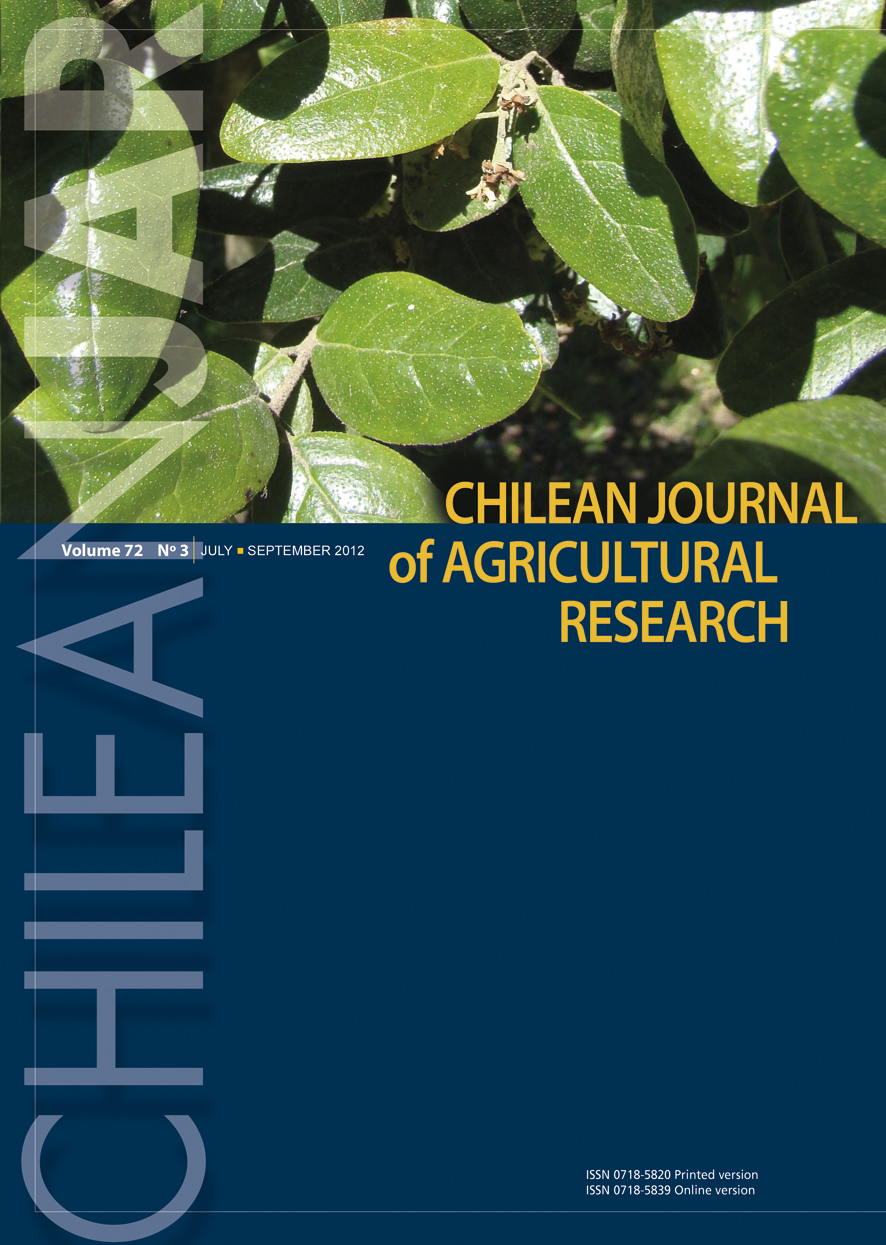
|
Chilean Journal of Agricultural Research
Instituto de Investigaciones Agropecuarias, INIA
ISSN: 0718-5820
EISSN: 0718-5820
Vol. 70, No. 4, 2010, pp. 537-544
|
 Bioline Code: cj10059
Bioline Code: cj10059
Full paper language: English
Document type: Research Article
Document available free of charge
|
|
|
Chilean Journal of Agricultural Research, Vol. 70, No. 4, 2010, pp. 537-544
| en |
Antioxidant Capacity, Anthocyanins, And Total Phenols Of Wild And Cultivated Berries In Chile
Guerrero C., Jaime; Ciampi P., Luigi; Castilla C., Andrea; Medel S., Fernando; Schalchli S., Heidi; Hormazabal U., Emilio; Bensch T., Emma & Alberdi L., Miren
Abstract
It is possible to incorporate a lot of natural antioxidants into the human organism by consuming berries which can prevent diseases generated by the action of free radicals. Antioxidants neutralize free radicals and thus protect the organism from the oxidative damage of lipids, proteins, and nucleic acids. Berries stand out as one of the richest sources of antioxidant phytonutrients among various fruits and vegetables. The objective of this research was to determine antioxidant capacity (AC), total anthocyanins (TA), and total phenols (TP) of wild and cultivated berries in different localities of La Araucanía and Los Ríos Regions in Chile. These parameters were analyzed by using the free radical 2,2-diphenyL-1-picrylhydrazyl hydrate (DPPH) method, pH-differential, and Folin-Ciocalteu method. Percentages of DPPH discoloration of different berries studied were between 67.8% and 95.3% for red sarsaparilla and rosehip, respectively. Maqui berries showed a significantly higher TA content (2240.2 and 1445.3 mg L-1 cyanidin 3-glucoside) than other berries, and a mean for all berries of 335.5 mg L-1. Higher phenol content levels were obtained in two cultivars of saskatoon (773.9 and 1001.9 mg L-1 gallic acid) and wild rosehip (1457.0 and 1140.4 mg L-1 gallic acid). We conclude that there are significant differences in antioxidant capacity of wild and cultivated Chilean berries in this study which show a strong correlation between AC and TP content.
Keywords
2,2-diphenyL-1-picrylhydrazyl, Vaccinium corymbosum, antioxidant potential.
|
| |
| es |
Capacidad antioxidante, antocianinas y fenoles totales de berries silvestres y cultivados en Chile.
Guerrero C., Jaime; Ciampi P., Luigi; Castilla C., Andrea; Medel S., Fernando; Schalchli S., Heidi; Hormazabal U., Emilio; Bensch T., Emma & Alberdi L., Miren
Resumen
rosa mosqueta. El maqui presentó un contenido de AT significativamente mayor (2240,2 y 1445,3 mg L-1 cianidina 3-glucósido) que el resto de los berries, el promedio de AT fue de 335,5 mg L-1. En cuanto al contenido FT los mayores niveles se obtuvieron en los dos cultivares de saskatoon (773,9 y 1001,9 mg L-1 ácido gálico) y en rosa mosqueta silvestre (1457,0 y 1140,4 mg L-1 de ácido gálico). En este estudio se concluye que existen diferencias significativas en la capacidad antioxidante de frutos silvestres y cultivados en Chile, observándose una fuerte correlación entre el CA y el contenido de FT.
Palabras-clave
2,2-diphenyL-1-picrylhydrazyl, Vaccinium corymbosum, potencial antioxidante.
|
| |
© Copyright 2010 Chilean Journal of Agricultural Research.
Alternative site location: http://www.inia.cl
|
|
